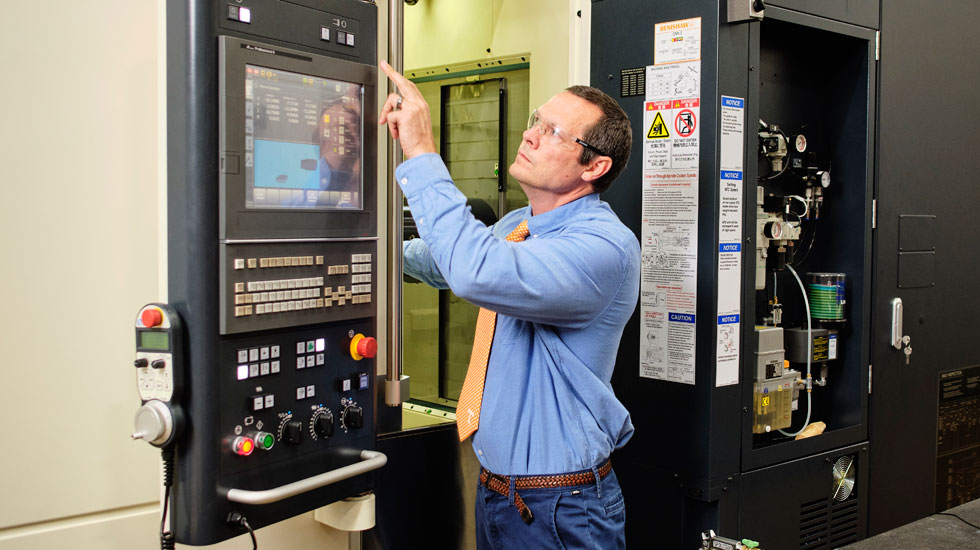 Like an archeologist seeking out buried relics of the past, Tony Schmitz has a knack for revealing objects hidden underneath layers of resources.
Like an archeologist seeking out buried relics of the past, Tony Schmitz has a knack for revealing objects hidden underneath layers of resources.
The difference in his case is that the items contained within exist only in thought until he creates them, meticulously removing bits and pieces of existing elements to expertly craft a new item out of the confines of its host material.
Known as machining, or more recently subtractive manufacturing, its name alone tells you about its process in much the same way as additive manufacturing, which adds material layer by layer to make a finished product.
Schmitz’s arrival to UT helps strengthen MABE’s role as a leader in the advanced manufacturing revolution by fitting neatly with its renowned efforts in additive manufacturing and providing expertise all along the manufacturing spectrum.
“Additive and subtractive manufacturing are extremely complementary to one another,” said Schmitz, who comes to UT with a joint appointment at Oak Ridge National Laboratory. “With additive, you can build an object that is generally what you want, but subtractive manufacturing allows us to create the final geometry with the desired accuracy and surface finish.”
Schmitz described the chance to join UT as the “perfect opportunity,” noting that he has already begun to collaborate with other faculty members. Notably, Schmitz, Associate Professor Chad Duty, and others have teamed up to submit a proposal to the US Navy as part of the Department of Defense’s Manufacturing Engineering Education Program.
If selected, Duty and Schmitz will be able to create a one-of-a-kind lab focused on machine tool research, additive and subtractive manufacturing, and robotics.
Schmitz won’t be waiting for the outcome of that proposal to craft a lab space, however, with some of his research already taking place at ORNL’s Manufacturing Demonstration Facility as well as in a new lab in the Dougherty Engineering Building.
“Vibration during subtractive processes continues to be one of the most important areas that needs addressing in our particular field, and it’s one we hope to tackle in the lab,” Schmitz said. “Another thing we hope to do is to incorporate subtractive ideas into the planning process instead of it being something you do at the end of additive manufacturing. It will take a new approach, new way of thinking, but should allow us to have better, more refined designs and outcomes.”
The chance to develop today’s students into tomorrow’s thought leaders is also an important opportunity in Schmitz’s eyes—one that brought him to UT in the first place. ORNL had planned to hire Schmitz and another colleague from the University of North Carolina at Charlotte as full-time researchers, but Schmitz felt it was important to continue his role as an educator.
In fact, far from considering it a requirement, he really enjoys it.
“Growing up in the 1970s and 80s, I always wanted to be the front man for a heavy metal band, like AC/DC,” Schmitz said. “For me, standing in front of a class is my stage, my chance to take on that lead singer role. I’m motivated by my research, but teaching is what keeps me going.”
If the five doctoral students who followed him to UT are any example, he must be hitting all the right notes.